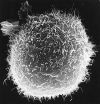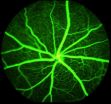(Press-News.org) For the past 10 years, scientists have been fascinated by a type of "electric bacteria" that shoots out long tendrils like electric wires, using them to power themselves and transfer electricity to a variety of solid surfaces.
Today, a team led by scientists at USC has turned the study of these bacterial nanowires on its head, discovering that the key features in question are not pili, as previously believed, but rather are extensions of the bacteria's outer membrane equipped with proteins that transfer electrons, called "cytochromes."
Scientists had long suspected that bacterial nanowires were pili – Latin for "hair" – which are hair-like features common on other bacteria, allowing them to adhere to surfaces and even connect to one another. Given the similarity of shape, it was easy to believe that nanowires were pili. But Moh El-Naggar, assistant professor at the USC Dornsife College of Letters, Arts and Sciences, says he was always careful to avoid saying that he knew for sure that's what they were.
"The pili idea was the strongest hypothesis, but we were always cautious because the exact composition and structure were very elusive. Then we solved the experimental challenges and the hard data took us in a completely different direction. I have never been happier about being wrong. In many ways, it turned out to be an even cleverer way for bacteria to power themselves," said El-Naggar, corresponding author of the study, who was named a Popular Science Brilliant 10 researcher in 2012 for his pioneering work with bacterial nanowires.
This latest study will be published online by the Proceedings of the National Academy of Sciences on August 18.
Scientists from USC collaborated with colleagues from Penn State, the University of Wisconsin-Milwaukee, Pacific Northwest National Laboratory, and Rensselaer Polytechnic Institute on the research.
The first clue came from tracking the genes of the bacteria. During the formation of nanowires, scientists noted an increase in the expression of electron transport genes, but no corresponding increase in the expression of pilin genes.
Challenged by this evidence of what nanowires weren't, the team next needed to figure out what they actually were. El-Naggar credits Sahand Pirbadian, USC graduate student, with devising an ingenious yet simple strategy to make the discovery.
By depriving the bacteria of oxygen, the researchers were able to force the bacteria to stretch out their nanowires on command, allowing the process to be observed in real time. And by staining the bacterial membrane, periplasm, cytoplasm, and specific proteins, researchers were able to take video of the nanowires reaching out – confirming that they were based on membrane, and not pili at all.
The process isn't as simple as it sounds. Generating videos of the nanowires stretching out required new methods to simultaneously label multiple features, keep a camera focused on the wriggling bacteria, and combine the optical techniques with atomic force microscopy to gain higher resolution.
"It took us about a year just to develop the experimental set-up and figure out the right conditions for the bacteria to produce nanowires," Pirbadian said. "We had to go back and re-examine some older experiments and rethink what we knew about the organism. Once we were able to induce nanowire growth, we started analyzing their composition and structure, which took another year of work. But it was well worth the effort because the outcome was very surprising – but in hindsight made a lot of sense."
Understanding the way these electric bacteria work has applications well beyond the lab. Such creatures have the potential to address some of the big questions about the nature of life itself, including what types of lifeforms we might find in extreme environments, like space. In addition, this research has the potential to inform the creation of living, microbial circuits – forming the foundation of hybrid biological-synthetic electronic devices.
This research was funded at USC by the U.S. Department of Energy and Air Force Office of Scientific Research and made possible by facilities at the USC Centers of Excellence in NanoBioPhysics and Electron Microsopy and Microanalysis.
Bacterial nanowires: Not what we thought they were
New videos of morphing bacteria reveal that the strange, distinguishing features of so-called 'electric bacteria' aren't quite what they at first appeared to be
2014-08-18
ELSE PRESS RELEASES FROM THIS DATE:
WSU researchers find crucial step in DNA repair
2014-08-18
PULLMAN, Wash.—Scientists at Washington State University have identified a crucial step in DNA repair that could lead to targeted gene therapy for hereditary diseases such as "children of the moon" and a common form of colon cancer.
Such disorders are caused by faulty DNA repair systems that increase the risk for cancer and other conditions.
The findings are published in this week's Proceedings of the National Academy of Sciences. The study was funded by the National Institute of Environmental Health Sciences.
Regents Professor Michael Smerdon and post-doctoral ...
Worm virus details come to light
2014-08-18
HOUSTON – (Aug. 18, 2014) – Rice University scientists have won a race to find the crystal structure of the first virus known to infect the most abundant animal on Earth.
The Rice labs of structural biologist Yizhi Jane Tao and geneticist Weiwei Zhong, with help from researchers at Baylor College of Medicine and Washington University, analyzed the Orsay virus that naturally infects a certain type of nematode, the worms that make up 80 percent of the living animal population.
The research reported today in the Proceedings of the National Academy of Sciences will help ...
Innate lymphoid cells elicit T cell responses
2014-08-18
In case of an inflammation the body releases substances that increase the immune defense. During chronic inflammation, this immune response gets out of control and can induce organ damage. A research group from the Department of Biomedicine at the University and the University Children's Hospital of Basel now discovered that innate lymphoid cells become activated and induce specific T and B cell responses during inflammation. These lymphoid cells are thus an important target for the treatment of infection and chronic inflammation. The study was recently published in the ...
Aspirin, take 2
2014-08-18
Hugely popular non-steroidal anti-inflammation drugs like aspirin, naproxen (marketed as Aleve) and ibuprofen (Advil, Motrin) all work by inhibiting or killing an enzyme called cyclooxygenase – a key catalyst in production of hormone-like lipid compounds called prostaglandins that are linked to a variety of ailments, from headaches and arthritis to menstrual cramps and wound sepsis.
In a new paper, published this week in the online early edition of PNAS, researchers at the University of California, San Diego School of Medicine conclude that aspirin has a second effect: ...
Pygmy phenotype developed many times, adaptive to rainforest
2014-08-18
The small body size associated with the pygmy phenotype is probably a selective adaptation for rainforest hunter-gatherers, according to an international team of researchers, but all African pygmy phenotypes do not have the same genetic underpinning, suggesting a more recent adaptation than previously thought.
"I'm interested in how rainforest hunter-gatherers have adapted to their very challenging environments," said George H. Perry, assistant professor of anthropology and biology, Penn State. "Tropical rainforests are difficult for humans to live in. It is extremely ...
Bionic liquids from lignin
2014-08-18
While the powerful solvents known as ionic liquids show great promise for liberating fermentable sugars from lignocellulose and improving the economics of advanced biofuels, an even more promising candidate is on the horizon – bionic liquids.
Researchers at the U.S. Department of Energy's Joint BioEnergy Institute (JBEI) have developed "bionic liquids" from lignin and hemicellulose, two by-products of biofuel production from biorefineries. JBEI is a multi-institutional partnership led by Lawrence Berkeley National Laboratory (Berkeley Lab) that was established by the ...
Proteins critical to wound healing identified
2014-08-18
Mice missing two important proteins of the vascular system develop normally and appear healthy in adulthood, as long as they don't become injured. If they do, their wounds don't heal properly, a new study shows.
The research, at Washington University School of Medicine in St. Louis, may have implications for treating diseases involving abnormal blood vessel growth, such as the impaired wound healing often seen in diabetes and the loss of vision caused by macular degeneration.
The study appears Aug. 18 in the Proceedings of the National Academy of Sciences (PNAS) online ...
Climate change will threaten fish by drying out Southwest US streams, study predicts
2014-08-18
COLUMBUS, Ohio – Fish species native to a major Arizona watershed may lose access to important segments of their habitat by 2050 as surface water flow is reduced by the effects of climate warming, new research suggests.
Most of these fish species, found in the Verde River Basin, are already threatened or endangered. Their survival relies on easy access to various resources throughout the river and its tributary streams. The species include the speckled dace (Rhinichthys osculus), roundtail chub (Gila robusta) and Sonora sucker (Catostomus insignis).
A key component ...
Trees and shrubs invading critical grasslands, diminish cattle production
2014-08-18
TEMPE, Ariz. – Half of the Earth's land mass is made up of rangelands, which include grasslands and savannas, yet they are being transformed at an alarming rate. Woody plants, such as trees and shrubs, are moving in and taking over, leading to a loss of critical habitat and causing a drastic change in the ability of ecosystems to produce food — specifically meat.
Researchers with Arizona State University's School of Life Sciences led an investigation that quantified this loss in both the United States and Argentina. The study's results are published in today's online ...
Researchers obtain key insights into how the internal body clock is tuned
2014-08-18
DALLAS – August 18, 2014 – Researchers at UT Southwestern Medical Center have found a new way that internal body clocks are regulated by a type of molecule known as long non-coding RNA.
The internal body clocks, called circadian clocks, regulate the daily "rhythms" of many bodily functions, from waking and sleeping to body temperature and hunger. They are largely "tuned" to a 24-hour cycle that is influenced by external cues such as light and temperature.
"Although we know that long non-coding RNAs are abundant in many organisms, what they do in the body, and how they ...
LAST 30 PRESS RELEASES:
Deep neural networks enable accurate pricing of American options under stochastic volatility
Collective risk resonance in Chinese stock sectors uncovered through higher-order network analysis
Does CPU impact systemic risk contributions of Chinese sectors? Evidence from mixed frequency methods with asymmetric tail long memory
General intelligence framework to predict virus adaptation based on a genome language model
Antibiotic resistance is ancient, ecological, and deeply connected to human activity, new review shows
Vapes, pouches, heated tobacco, shisha, cigarettes: nicotine in all forms is toxic to the heart and blood vessels
From powder to planet: University of Modena engineers forge a low-carbon future for advanced metal manufacturing
Super strain-resistant superconductors
Pre-school health programme does not improve children’s diet or physical activity, prompting call for policy changes, study finds
Autumn clock change linked to reduction in certain health conditions
AI images of doctors can exaggerate and reinforce existing stereotypes
Where medicine meets melody – how lullabies help babies and parents in intensive care
We may never be able to tell if AI becomes conscious, argues philosopher
AI video translation shows promise but humans still hold the edge
Deep ocean earthquakes drive Southern Ocean’s massive phytoplankton blooms, study finds
Without campus leftovers to pick through, the beaks of this bird changed shape during the pandemic
High-dose antibiotic does not reduce mortality in tuberculous meningitis
How many insects fly in the sky above the USA?
Could cheese protect your brain health?
Who faces more difficulty recovering from stroke?
Colliding galaxies create the brightest, fastest growing black holes at their center
New BrainHealth research reveals tradeoffs on sleep with cannabis use for chronic pain
Aging-US now on ResearchGate, enhancing visibility for authors and readers
'Molecular glue' stabilizes protein that inhibits development of non-small cell lung cancer
Mount Sinai Health System is recognized in 2025 Chime Digital Health Most Wired survey
From prey to predator: How carnivores spread beneficial fungi
Menopause symptoms may be frequent and have negative effects, according to female endurance athletes
US Congressmembers’ responses on X to mass shooting events differ along party lines
KAIST-UEL team develops “origami” airless wheel to explore lunar caves
Individual genetic differences render some therapies ineffective
[Press-News.org] Bacterial nanowires: Not what we thought they wereNew videos of morphing bacteria reveal that the strange, distinguishing features of so-called 'electric bacteria' aren't quite what they at first appeared to be







